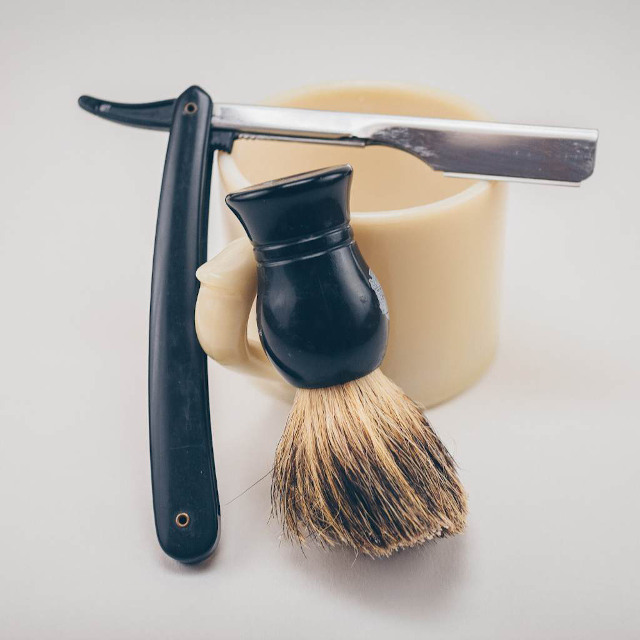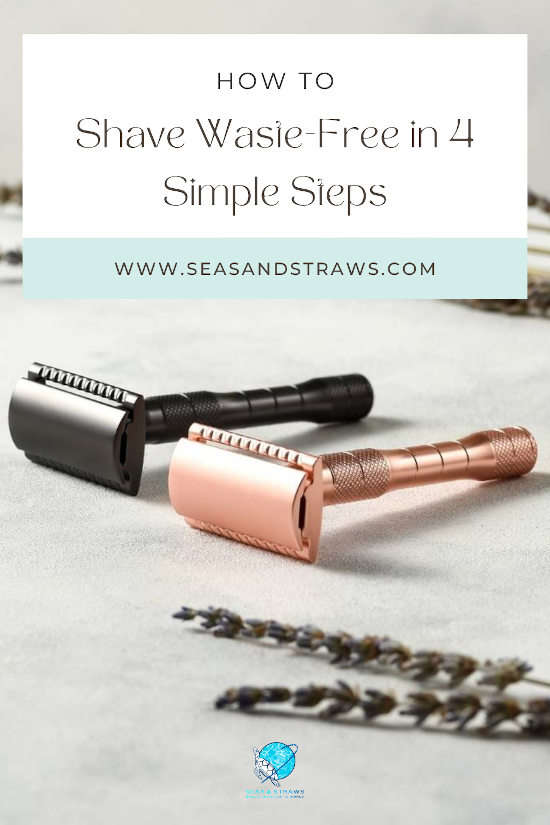- Home
- Plastic-Free Home
- Zero Waste Bathroom
- How to Shave Waste-free
How to Shave Waste-Free in 4 Simple Steps
By Jamie Skinner, co-founder of UK-based sustainable brand Jungle Culture
Look around a “normal” British bathroom,
past the stoneware tiles and porcelain tubs and what reveals itself is a
collection of plastic-cased toiletries lining every available surface.
Clustered in one corner, our shower gels, shampoos and conditioners. Above the sink sits our tubed toothpastes and bottles of Listerine. Peer round the toilet and tucked in discreetly sits an assortment of cleaning supplies.
Open a cupboard and out falls our plastic razor, Gillette, Venus or Wilkinson no doubt. As a society we’ve been brainwashed into thinking that those are the only available options. A study conducted in 1990 and shared by USA Today estimates that more than 2 billion plastic razors and blades are thrown away every year in the US alone.
Staggeringly, that figure is from just one country and was predicted at a time when the world population was just over 5 billion. With global populations soaring and our thirst for grooming products rising, imagine how many throwaway razors are being produced in 2023 ...
Many will argue that the solution is simple. Don’t shave. But in a world where judgments are made quickly, a world of 280 characters and 15 second video snippets, who can afford to make a bad first impression?
For those of us that prefer no hair and no waste, here is a simple step-by-step guide that will help you rid at least one plastic problem from your bathroom.
Step one: Switch your razor for a waste-free alternative
Razor alternatives, unless you are daring enough to shave with a knife (like this guy), are broadly separated into 3 options.
Option 1: For the purists
 Straight razors for the shaving purists.
Straight razors for the shaving purists.What is it?
Straight razors are the OG of shaving tools.
Also known as cut throats (not great for PR), the first steel version of this
classic shaving tool was produced in Sheffield in the 1600s.
Price
Starting at £4.99 or $6.00 on Amazon for a basic straight razor,
this is your most budget option, although we’d advise to invest around £15-20 ($18-24) to nab yourself a high-quality and long-lasting razor.
Advantages
- Gets the job done
- Available anywhere in the world
- Looks cool (we think)
Disadvantages
- More of a learning curve than our other options
- Easier to cut yourself
- Extreme care needed when shaving your unmentionables
Option 2: For the purists who don’t like shaving injuries
 Safety razors are safer than cut-throats but still require a bit of practice
Safety razors are safer than cut-throats but still require a bit of practiceWhat is it?
Safety razors are the next generation of
shaving tools and clearly razor producers learned from their mistakes when
naming this clever little instrument. Like cut throats, safety razors use
double edged blades and no electricity. The key difference is the ridged guard
placed underneath the razor head which protects the user, making it more
difficult to cut yourself.
Price
Safety razors start at around £10.00 ($12.00), but
we’d recommend spending a little bit more to guarantee a long-lasting and
well-built product. These reusable safety razors from Jungle Culture
will set you back £18.99 ($22.86) but come with a 5-year guarantee.
Advantages
- Safer and easier to use than a straight razor
- Can be used by women and men
- No issues shaving down below
- Cheaper than our third option
Disadvantages
- Still has a learning curve
- Doesn’t have the same bad-boy appeal commanded by cut throats!
Option 3: For the who-cares-about-purists
 Electric shavers are the modern solution for the safety-conscious man or woman
Electric shavers are the modern solution for the safety-conscious man or womanWhat is it?
Electric razors are the ultimate modern
shaving solution. They come in all shapes and sizes, and are normally
rechargeable, but some also run on battery power. Unlike our previous two
options, electric razors do not generally have replaceable blades, so the price
you pay for the razor includes everything.
Price
The cheapest electric razors come in at
around £20.00 ($24.00), but we’d suggest paying a lot more than this. For a reliable
electric razor, £60.00+ (around $72.00) is a good starting point. Here is one at the lower end of the scale that
we can vouch for.
Advantages
- The safest option
- Does not need additional blades
- Options for men and women
Disadvantages
- Big initial outlay for a quality razor
- Not the closest shave
Step Two: Accessories
Shaving waste is not
limited to the razor base. Blades, shaving foam and aftercare balms all
contribute to our overall household waste, so here are a few options for
waste-free shaving accessories:
Razor blades - £0.13 ($0.15)/ per blade
Shaving soap - £6.49 ($7.81)/per 6 months
Shaving balm - £17.95 ($21.61)/per 6 months
Step Three: Learning Curves
Now that you’ve got the tools, you need to learn how to use them!
In the past, barbers would shave a balloon to see if they were able to shave a customer without cutting them. Testing on balloons may sound fun, but we’re trying to avoid waste, so test your skills on your arm or leg.
You can learn how to use a straight razor with this video tutorial: Straight
razor tutorial
Here is a video guide for using a safety
razor: Safety razor tutorial
Electric razors vary by type, but read the instructions that come with your razor and you should be okay!
Step Four: Aftercare
When your razors and razor blades come to
the end of their life, you should recycle them to make sure that they don’t end
up in landfill sites.
Sadly, all razor blades are coated with a Teflon-esque material that prevents
recycling at a normal recycling facility, but you can collect together your
shaving waste and send everything (cost-free) to Terracycle who are a specialist recycling
company.
And there we have it, waste-free shaving in 4 easy steps!
If you have any other tips for reducing bathroom waste, leave them in the
comments on social media or send me a message!
This post was written by Jamie Skinner, co-founder of UK-based sustainable brand Jungle Culture. Jamie started Jungle Culture after being inspired by eco-friendly alternatives he found in Vietnam, where the company was born. He now writes articles teaching people how to make the switch to plastic alternatives. You can read more about the company here:
Want to make your home toxin-free, healthy and sustainable, too, but not sure where to start?
If you want to make your home toxic-free, healthy and safe for your children as well but aren't sure where to start, I'd love to help you! Email me on jana@seasandstraws.com or click here. In the meantime, check out my blog post about my Zero-Waste Coaching, here!















